I first saw the Ushiku Daibutsu in the quirky movie, Shimotsuma Monogatari (Japanese: 下妻物語), which is called Kamikaze Girls in English. You can see the Daibutsu in the hilarious first ten minutes of the movie. It’s in Ibaraki Prefecture, where I used to work, a place I thought was the about the most God-awful area in Japan. The Ibaraki that I saw in Shimotsuma Monogatari, though, was a strangely beautiful, surreal piece of countryside, and I started to wonder if I’d been blinded by the misery of a job I hated. There was only one way to find out, so last weekend, I headed to Ushiku.
It turned out to be right up there in terms of quirkiness with almost anything else Japan has to offer – a giant Buddha statue some 36 stories tall in the middle of nowhere, built by a famous Kyoto temple seemingly as a promotional gimmick for a giant graveyard.
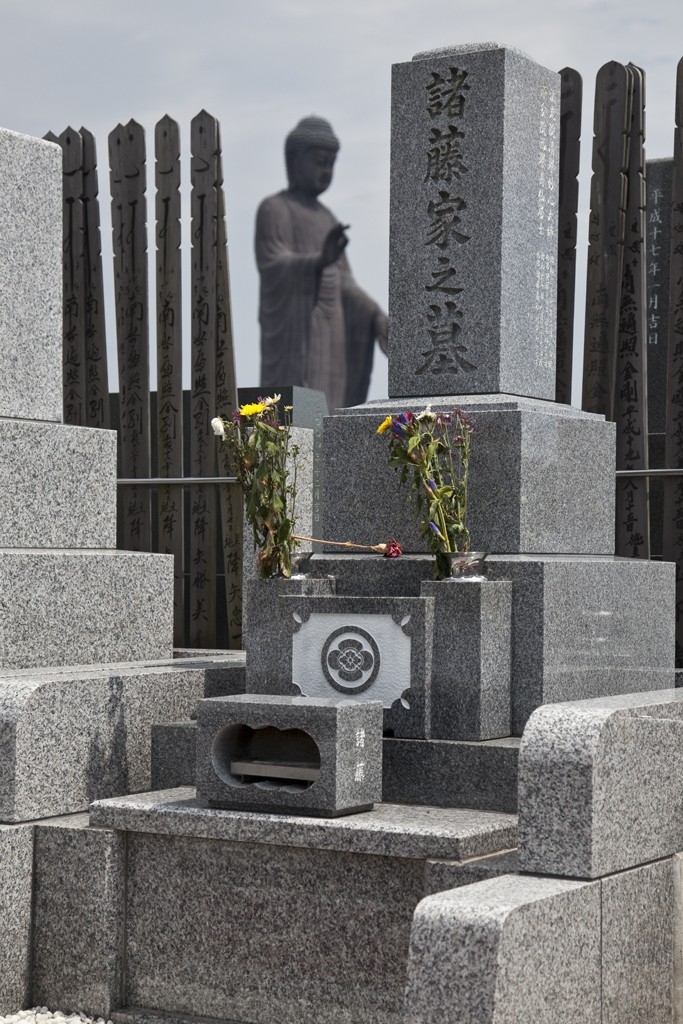
The Great Buddha was built by the Higashi Honganji Temple, whose headquarters is one of the two big temples in front of Kyoto Station. It’s called ARCADIA in English, which stands for Amida’s Radiance & Compassion Actually Developing & Illuminating Area.
The statue weighs 4000 tons, and its outstretched left palm alone is 18 m long.
Last year I read a post on one of my favorite blogs, Big Red Dot Out of Ruins, called 13 Views of Fuji Terebi, Odaiba. Inspired (?) by Hokusai, he took a series of photos of the Fuji Terebi Building, one of Odaiba’s most famous landmarks. I thought it was a great idea to bring some creativity to photos – taking multiple views of the same object to make completely different images with different moods or aspects, so I decided to try it out here.
These Chinese characters say Daibutsu (Great Buddha).
Careful counters will notice that there are not actually 36 photos in this series, but Hokusai’s 36 Views of Mt. Fuji are actually 46 in number, so I figured it was okay if I had a slightly different number of photos too. I guess “How many pictures are there in Hokusai’s 36 views of Mt. Fuji series” would make a good “Who is buried in Grant’s Tomb” or “How long was the hundred years war” type of trivia question.
This is a honbyou (mausoleum) in the cemetery around the Buddha statue. It contains the remains of the sect’s founder.
Another shot of the honmyou.
The park is filled with beautiful flowers, and is especially lovely in from late-April to the end of May when the poppies and marigolds are in bloom around a lake in front of the daibutsu.
Seems you can never escape powerlines in Japan.
This hand position symbolizes the omnipresence of the Amida Buddha.
Buddhas are often depicted standing on a lotus blossom. The lotus is a symbol of enlightenment because it is a beautiful flower that grows out of the mud, as the Buddha arises above the defilement and suffering of the physical world.
The cheapest plots are over 10,000 dollars for 33 years, and a tiny concrete marker with an area of less than half a square meter is over 3,000 dollars.
When it was built, the Ushiku Daibutsu was the largest statue in the world. Now there are a couple that are larger.
There’s a beautiful Japanese garden as well.
Admission to the park costs 500 yen. If you pay an additional 300 yen, you can go inside the Buddha, but I don’t recommend it. It’s pretty cheesy inside, and you have to wait for quite a while for the elevator. When you get to the top, there are just some tiny slit windows to look through.
On the second floor is a collection of Buddha statues in memory of people who have died. They go for anywhere from $3,000 to $10,000, but they actually look kind of cheap.
I really enjoyed the Ushiku Daibutsu. It was a fantastic place to take photographs, but I’m not sure if I would have enjoyed it so much without my camera. The grounds are pretty nice to walk around, but except for a monkey show aimed at kids, a petting zoo, and the garden, there isn’t that much to do. It’s over an hour from Tokyo by train, and you have to ride an infrequently-running bus for about 20 minutes after that.
Getting there:
Take the JR Joban Line from Ueno Station to Ushiku. It takes about 50 minutes and costs 950 yen. From the station, take the Kanto Tetsudo Bus bound for Ushiku Daibutsu.It takes 25 minutes and costs 500 yen.
Official Site: http://daibutu.net/index.html (Japanese only)
The cemetery’s website: http://www.bosan.net/index.html (Japanese only)

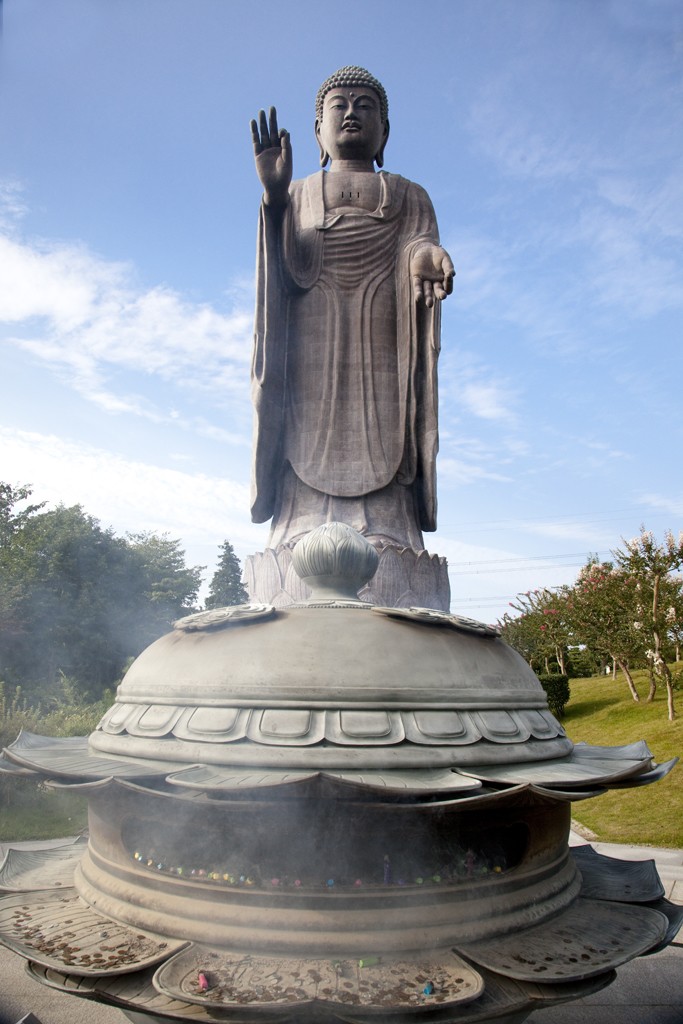

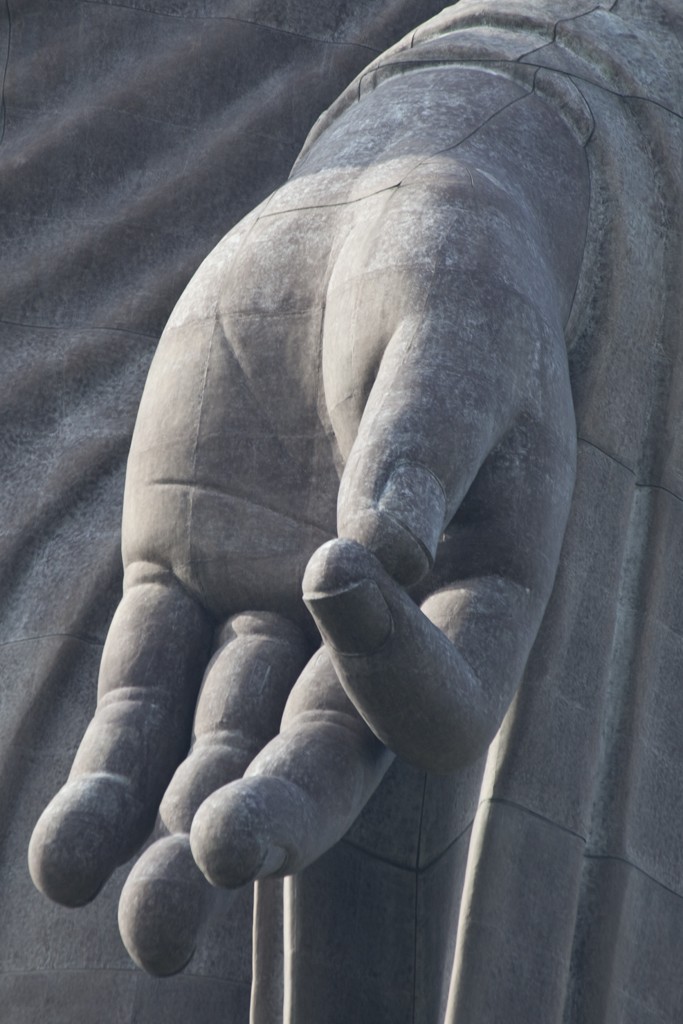


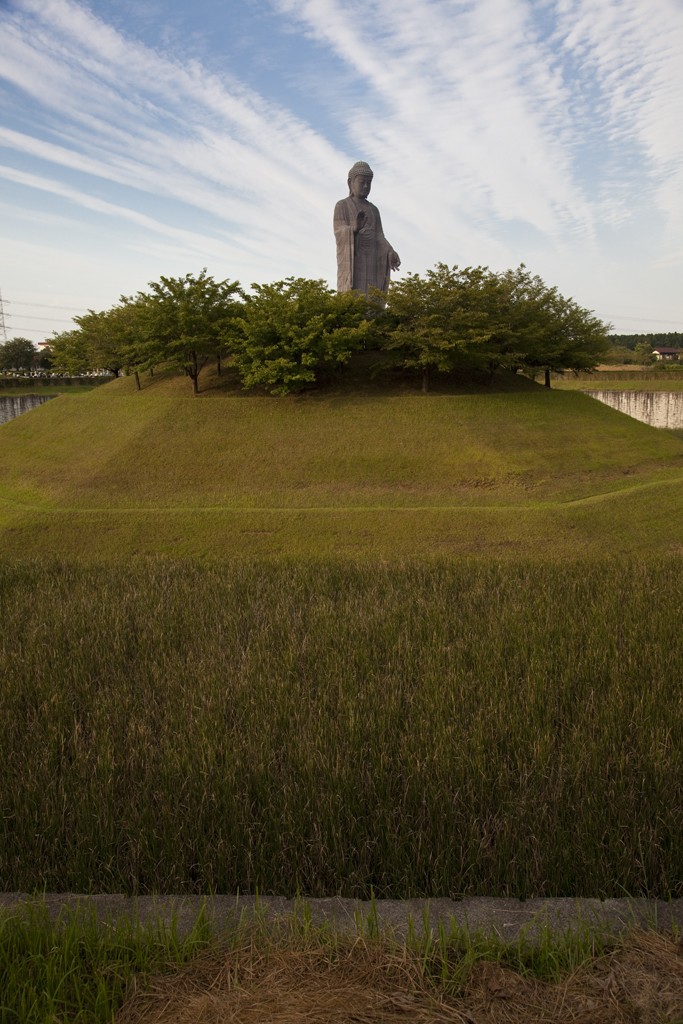

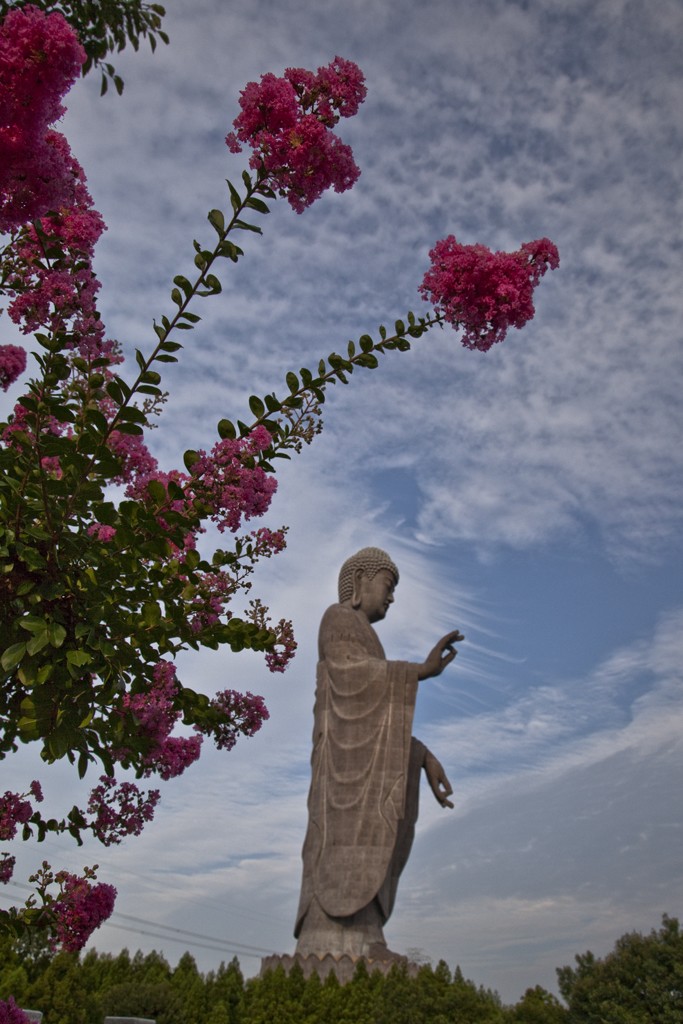
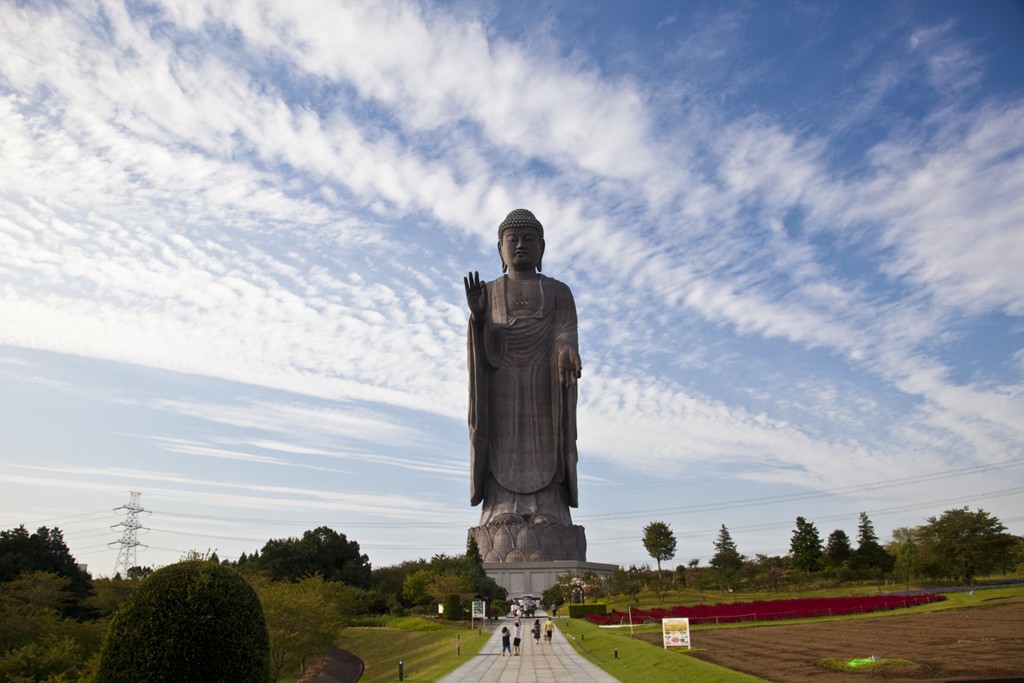
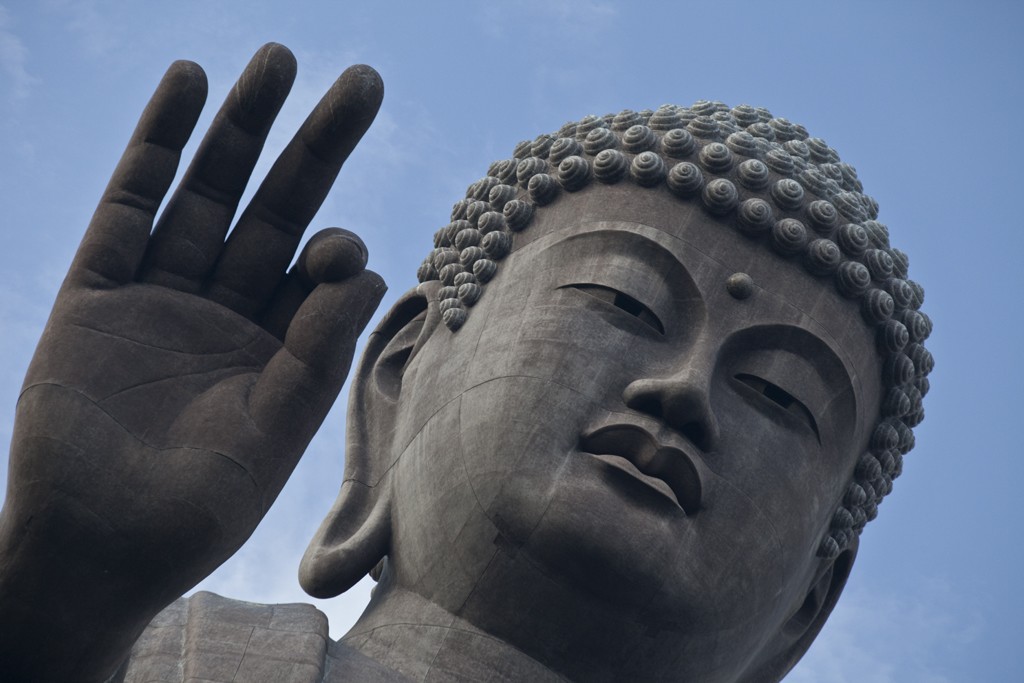


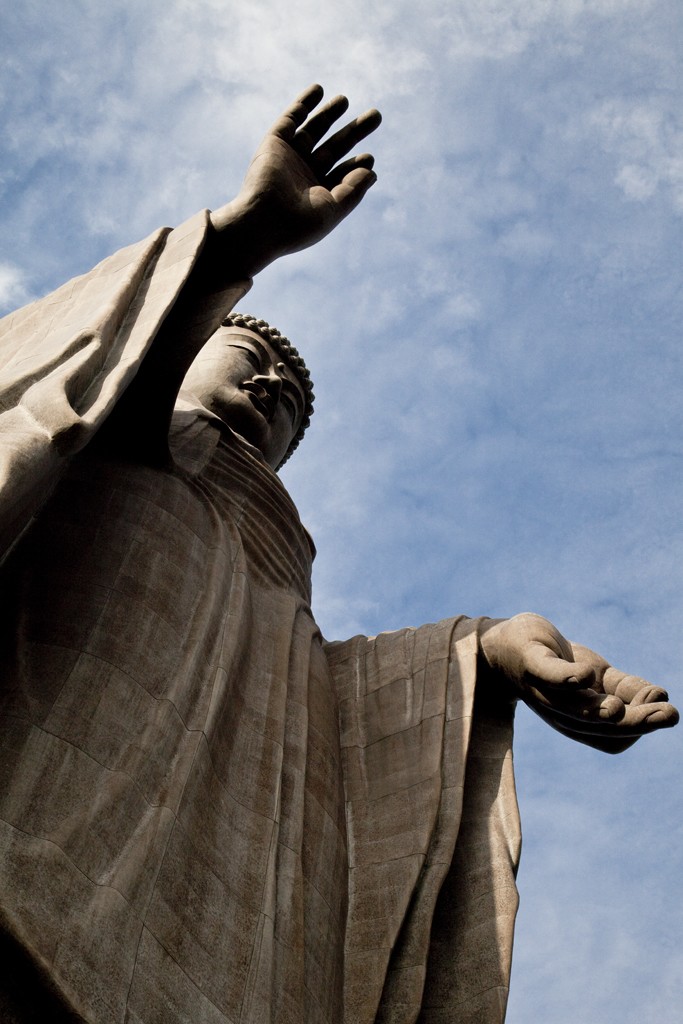

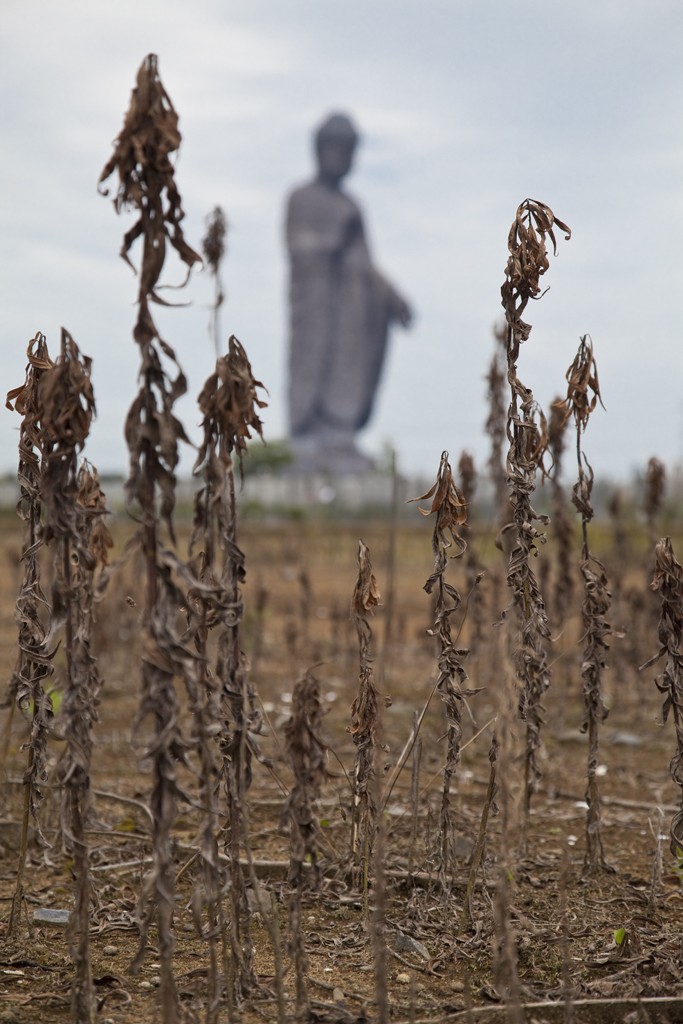
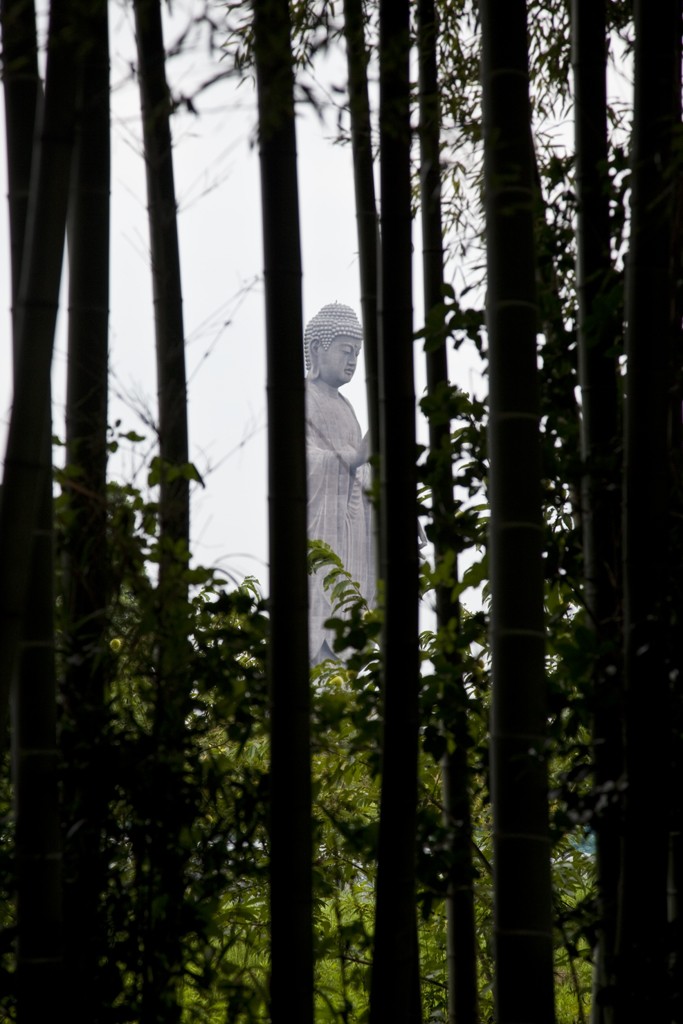


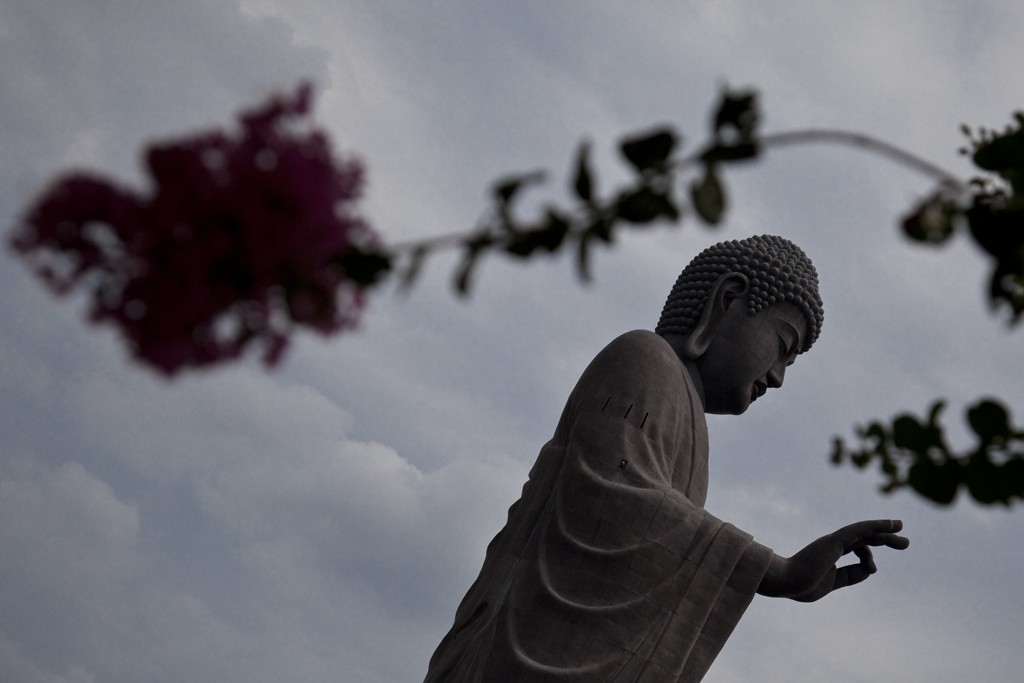







Wonderful shots; they capture a serenity that I hope truly exists there. Especially like the three w/Buddha out of focus in the background.
Great post.
thats amazing photos….
It is amazing how a statue, a created piece of art, with no soul or breath could look so naturally peaceful. Thank you.
There is need to emphasise the historical aspect of the time and life of the Buddha, that he was a Kirati-Mongolian Prince of Nepal, the Lion of the Sakyas.
I shall consider it a privilege to initiate the discussion.
I so remember hastle kung fu movie with killer style Buddhist site, amazing ^_^…V
great photos
Great shots especially of Budha thru the bamboo….
I am in Japan now working in a high school and I went to Takaoka recently. I loved looking at your pictures because the giant statues of the Daibutsu are really beautiful to me, I have been to Todai-ji and I am also going to the Daibutsu and maybe Kannon in Kamakura.
Lovely pictures!
amazing.. wish i can go japan in the future.
keep it up!
A great teacher with timeless teachings stands tall.
Beautiful pictures.
I’m glad that I Stumbled upon your blog. I’ll be reading regularly.
While looking at your pictures, I couldn’t help but feel that Godzilla was going to come stomping through at some point.
Best Regards,
Rick
I really like the omnipresence of the Amida Buddha photo.
That is an insanely big buddha, dwarfs the daibutsu in kamakura. Last week I was in Hong Kong and visited the largest seated Buddha in the world, but I reckon the Ushiku standing one is a lot bigger.
Great pics
Will
honmyou appears to be an amazing statue
Hi,
I linked to your blog post from my own describing my trip to see the Ushiku Daibutsu. Hope you don’t mind.
http://bit.ly/1Cehcw
Joe
I was there today and found it very nice, peaceful and breathtaking. Some parts inside the Buddha were really cheesy and cheap (as you said) but still interesting. A bus costed 660 yens this time…
Your pictures are beautyfull!
verry